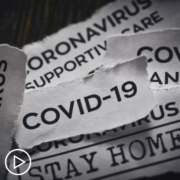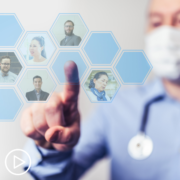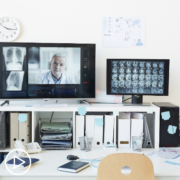Patient advocacy involves sharing your unique knowledge and experience with a disease or condition with the ultimate aim of raising awareness and influencing people to effect the desired change.
As patient advocates, we need a variety of tools in our advocacy toolbox in order to effectively advocate for our cause. One of the most important tools is the ability to write compellingly for a variety of audiences and formats.
Whatever audience you’re writing for, there are some basic “rules” to follow. Incorporating these into your writing will help you become a better and more persuasive writer.
1.Use Plain English
Using plain everyday words and avoiding jargon as much as possible is the first rule of good writing. For example, instead of “commence”, write “start”; instead of “in the event that”, use “if”. To quote the great writer Mark Twain “don’t let fluff and flowers and verbosity creep in.”
Medicine is full of abbreviations, scientific jargon, and medical terminology that not all readers will understand. People read at various levels. Knowing and understanding the audience for whom you are writing is crucial when creating content. Most people overestimate their readers’ knowledge. When writing, consider your intended audience’s level of medical knowledge.
2. Write in a conversational tone
Write as if you were speaking directly to the reader. Using pronouns like “we” and “you” fosters a sense of relatability and trust. The idea is to engage the reader and personal language does just that. It’s important to create a consistent tone of voice in your content, and at the same time, choose the tone that suits your audience.
3. Write short sentences and paragraphs
To separate sections of information, use headings and paragraph breaks. follow the one-idea-per-sentence rule. Presenting information in short, manageable chunks helps you keep the reader’s attention.
4. Avoid using the passive voice
One of the tell-tale signs of scientific writing is the use of passive sentences. To make sentences more direct, use the present and active tenses instead. The term “active voice” refers to a sentence that has a subject that acts on its verb. The passive voice indicates that a subject is the object of a verb’s action.
Active Voice: ”the nurse can vaccinate your child”
Passive Voice: “your child can be vaccinated by the nurse”
Take note of how the sentence in “active voice” is shorter than the sentence in “passive voice.” Passive voice sentences usually require more words, such as “was” or “are.”
5. Cut out the deadweight
If you want your sentences to be shorter, remove unnecessary words (‘very’ is a classic offender). To help you avoid overused cliches and phrases you could try a tool like ClicheFinder.net. This simple tool finds and highlights words, expressions, and phrases in your sentences that are trite, stale, or overused to help you improve your writing.
6. Use the rule of three
In the sentence above, you’ll notice that I used the “rule of three” (“trite, stale, overused”). This “rule” is based on the idea that reading about things that come in threes is inherently satisfying. Consider the impact of phrases like “faith, hope, and charity” or “mind, body, spirit.” Using the rule of three in your writing helps the reader remember your points.
7. Craft compelling headlines
Consider how many headlines you read every day while searching the web or scrolling through social media. What makes you want to read an article or a blog post? It’s frequently the headline. Your headline is likely to be the first (and possibly only) impression you make on a potential reader so it pays to take time over crafting a compelling title. There is no hard and fast rule for how long your title should be, but try not to make it any longer than necessary. Aim for 6–10 words or 50–60 characters as a rough guideline.
The next time you write a headline, you might consider trying the following tips.
- Personalize your title by adding a “You” or “Yours.” This makes your headline more effective since it speaks to your readers’ concerns and sounds more conversational.
- Avoid the passive voice in your titles. Use strong action-oriented words and instead.
- By nature we are curious beings, so try to leverage that curiosity in your titles.
8. Hook readers with your opening paragraph
You’ve piqued a reader’s interest with the headline; now you have the chance to pique their interest even further with the first paragraph. Make sure your opening sentence grabs the reader’s attention right away. Telling a story, sharing an eye-catching statistic, or using a memorable quote are all effective ways to accomplish this.
9. Share personal stories
As I mentioned above one of the most effective ways to capture attention is by sharing a story. Writing is more than just disseminating information. It should also make people feel something. Your brain reacts differently to a story than it does to any other type of information, including straight facts and data. While facts and figures engage only a small portion of the brain, stories engage multiple brain regions that combine to create rich emotional responses.
Storytelling is one of the most powerful ways to breathe life into your writing. To quote a North American Indian proverb “Tell me a fact and I’ll learn. Tell me a truth and I’ll believe. But tell me a story and it will live in my heart forever.”
10. Proofread before publishing
You should always proofread your work before publishing it. Choose a quiet, distraction-free place to do so. Turn off your phone, television, and radio so you can focus fully on the task at hand.
It helps if you print out your document. You’ll always notice more errors on a printed copy of your work. Using a blank sheet of paper to cover up the lines below the one you’re reading keeps you from skipping ahead of possible mistakes.
Another helpful suggestion is to read it aloud. When you read aloud, your ear may pick up on errors that your eyes may have missed. It’s especially useful for identifying run-on sentences and identifying those that don’t flow or make sense.
Aside from obvious spelling mistakes, check for the following:
- Have you used correct punctuation? Poor punctuation really undermines your professionalism. Pay particular attention to misplaced (or missing) commas and apostrophes. One of the most common mistakes is confusing “its” and “it’s.”
- Are there any long sentences you can shorten?
- Are you using the passive voice in your sentences? If so change to an active voice.
- Do your paragraphs flow logically with smooth transitions between each paragraph and from one idea to the next.
- Are there any sentences that are repetitious? Or are there any parts of the piece that need more context?
- Have you referenced your quotes and facts correctly? If you are presenting facts in your content, be sure the sources are reliable. Check and re-check the source of quotes and statistics.
- When publishing your writing online, such as on a blog, ensure that all links to external sites are functional and that the post is properly formatted. If you have a WordPress blog, I highly recommend installing the Yoast SEO plugin, which evaluates your post’s readability, flags passive sentences, and reminds you to use relevant keywords to improve web searchability.
Ideally, you should let your writing rest for a day to gain a new perspective on it. Better yet, have someone you trust proofread the text for you. You may be surprised at how many mistakes you missed.
Finally, one last point. End with a strong call to action. After reading your piece, what is one thing you want readers to remember or take action on? In your conclusion, motivate and empower your readers to put the information you have provided into practice.
Writing is a skill that improves with practice. I hope you find these tips helpful and encouraging as you work on improving the important skill of writing to persuade and inspire your audience.
A Stanford Medicine X e-Patient scholar, Marie Ennis O’Connor is an internationally recognized keynote speaker, writer, and consultant on global trends in patient engagement, digital health and participatory medicine. Marie’s work is informed by her passion for embedding the patient voice at the heart of healthcare values. She writes about the experience of transitioning from breast cancer patient to advocate on her award-winning blog Journeying Beyond Breast Cancer.








